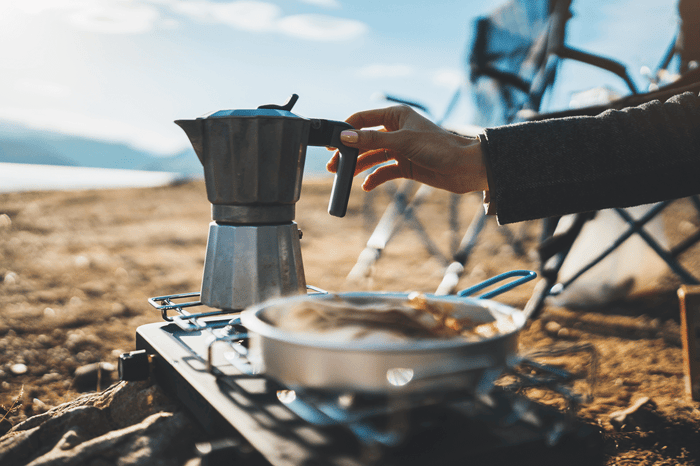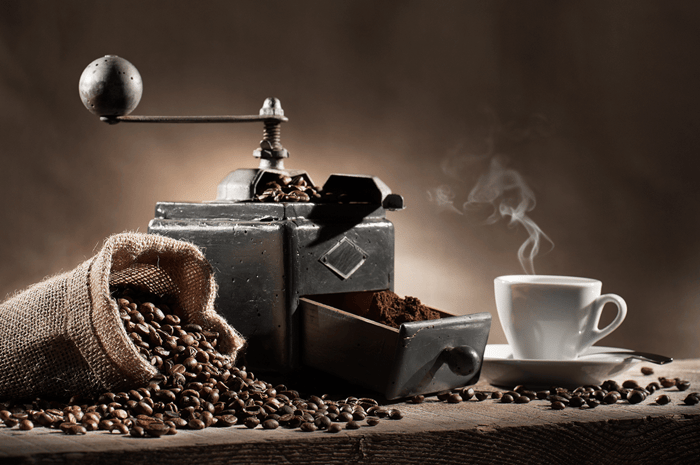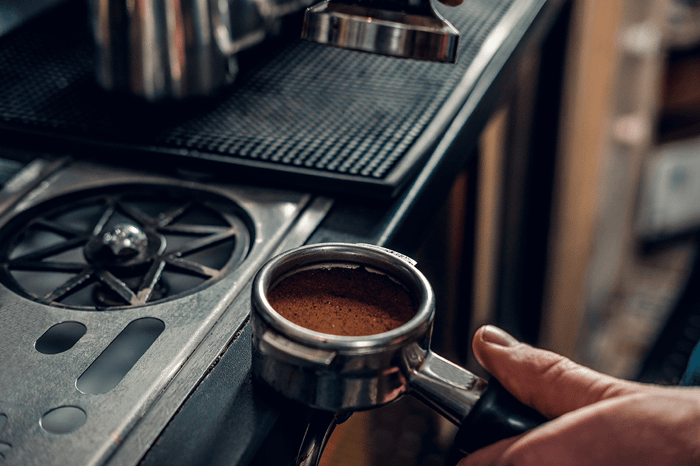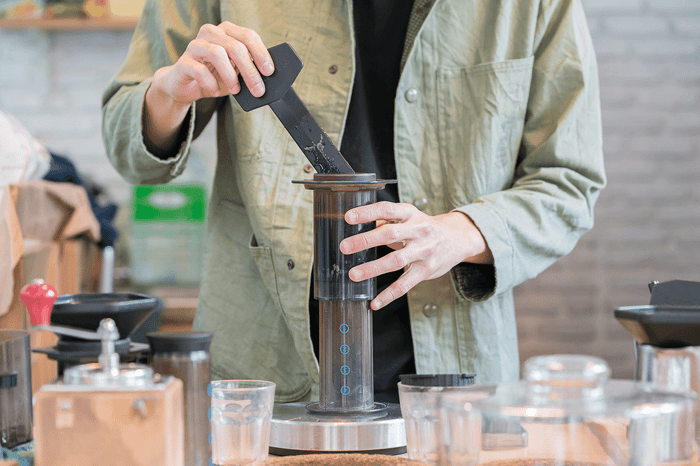
A “Moka pot” is basically a coffee maker that forces pressurized boiling water through ground coffee to brew it. There are both electric and stove top varieties of Moka pots.
They’re sort of like espresso makers, and they actually produce coffee with a higher extraction ratio than a typical espresso machine.
However, coffee brewed in a Moka pot has a different flavor profile than espresso—they can be similar, but they’re not the same thing.
While Moka pots are still somewhat obscure here in the U.S., Moka pots are widely used in Italy, where they were invented, and enjoy use across other European nations as well. They’re also commonly used in Australia, as well as in Cuba and other Latin American countries.

Some Backstory on the Moka Pot
Where does that weird name come from?
If you’re thinking “mocha,” you are correct.
Technically.
It’s actually named after Mocha, the city in Yemen—one of the earliest centers of coffee trade in the world. But that’s where we originally got the word “mocha,” so you’re still right.
The original Moka pots from the 1930s were made out of aluminum and Bakelite (a heat resistant plastic).
The general design of Moka pots hasn’t changed much over the years, and many of the ones currently on the market are still being manufactured in the same classic “angular coffee carafe/percolator” sort of shape.
Many are still made out of aluminum and Bakelite as well, though today we also have Moka pots being made using materials like glass and stainless steel.
Some companies have introduced changes meant to improve upon the original design, such as pressure regulators, and even milk frothers. However, the vast majority of Moka pots in use around the world don’t stray far, if at all, from the original 1933 design.
Unlike a lot of other brewers that have become more complex, you won’t find a lot of backlit LCD displays or “smart” Moka pots. At least I couldn’t find any.

The Myth of the Stained Moka Pot
There’s an old fashioned idea still floating around that having stains in a moka pot is a good thing, but it’s really not.
Purposely leaving coffee stains in a Moka pot just results in rancid coffee, which then requires a lot of scrubbing and cleaning to get out.
In aluminum pots, this can lead to a higher—not necessarily “unsafe,” but higher—level of aluminum leeching into your coffee.
Now, I may be biased because I usually only take my coffee with a little bit of aluminum, but when you’re dealing with metals leeching into your beverages, it’s best to just not play around and clean your aluminum Moka pot normally after you use it (with a mild detergent—not in the dishwasher).
If you’re interested in trying your mano at Cuban coffee—or just want a strong, rich, intensely flavored cup of coffee that’s probably as close to espresso as you’ll get without an espresso machine—pick up a Moka pot!
(And if you want all that plus the most caffeine of any coffee on the market, try Black Insomnia.)





